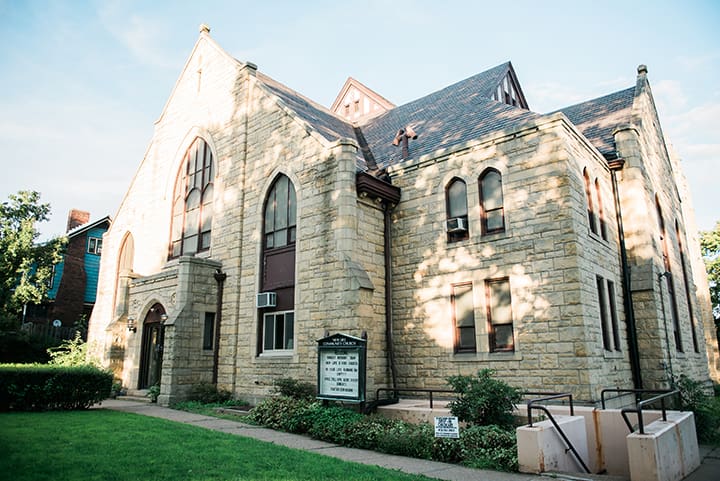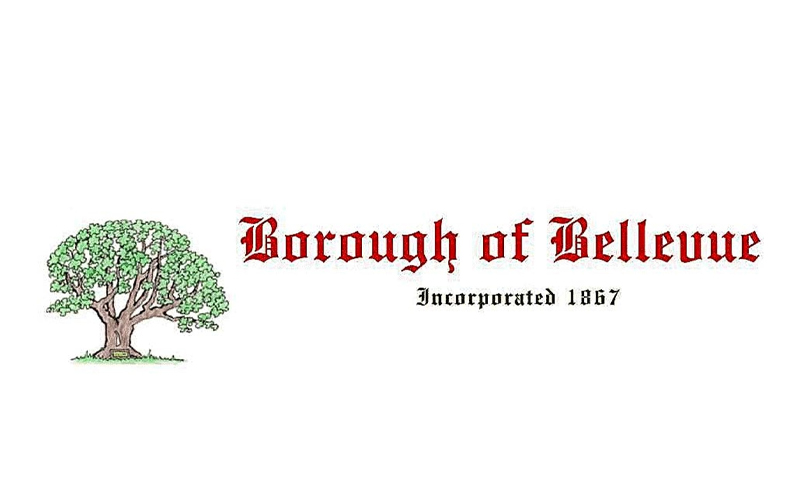Living in Bellevue
Stop by and see for yourself how great this community is.

Be Closer to Everything
Bellevue borders the City of Pittsburgh and is only 5 miles/ 10 minutes from downtown Pittsburgh.
- 10 minutes to Downtown Pittsburgh, The Strip District & Pittsburgh Public Market, The Cultural District, Market Square, and The David L. Lawrence Convention Center.
- 6 minutes to North Shore.
- 10 minutes to Southside.
- 15 minutes to Lawrenceville.
- 20 minutes to Pittsburgh’s East End.
With CONVENIENT ACCESS to I-279, PA 65, PA 28, major shopping districts are minutes away.

Zillow
Trulia
Realtor.com
Commercial Listings
Churches & Congregations
Northgate School District
Elected Officials
“Bellevue is a tight-knit, family-friendly community. I only looked for homes in Bellevue.”

Bayne Park & Skate Plaza
Bellevue’s cornerstone recreational park, is located directly in the center of town.The elegant Andrew Bayne Library is a historical mansion, and is a stunning representation of the beautiful victorian homes that line the streets of Bellevue!
The park has lots of green space, jungle gyms, trails, and is the home to our amazing skate park, Bellevue Skate Plaza – a mixed use plaza which is expanding and growing with each new project phase.
Bellevue Memorial Park
Dogwoods Dog Park
Eliminating Blight Through Conservatorship
The Abandoned and Blighted Property Conservatorship Act, more commonly known as conservatorship, is a statewide tool for eliminating blight and abandonment in Pennsylvania communities. It allows a court-approved conservator to rehabilitate residential, commercial, and industrial buildings that an owner has been unwilling or unable to maintain.
The Pennsylvania Abandoned and Blighted Property Conservatorship Act
Act 135 of 2008 – Conservatorship
In November of 2008, The Pennsylvania General Assembly declared that abandoned and blighted property adversely affect Pennsylvania’s older communities. It also acknowledged that poorly maintained residential, commercial, and industrial properties negatively impact citizens, business districts, the public safety, and property values. Thus, the Conservatorship Act was developed as a tool for citizens to use when property owners neglect to maintain their property in a manner that meets municipal codes and standards of the commonwealth.
Conservatorship is a method for court-approved conservators to remediate blight and abandonment through the rehabilitation of eligible properties. It has been implemented across the state by private individuals, community development corporations (CDCs), businesses, local governments, and nonprofits, all of which have realized the value in using conservatorship to reclaim, rehabilitate, and revitalize communities. Now in its tenth year, perspectives on conservatorship are evolving and policy recommendations are being made in efforts to make the process more consistent and effective for users
Once an eligible property has been identified, a party in interest must file a petition for conservatorship with the county court of common pleas where the property is located. Download The Abandoned and Blighted Property Conservatorship Act: 10 YEARS OF PRODUCTIVE REUSE for more details and case studies from the Pittsburgh area.
Community Development Glossary
501 (c)(3) – Section of the Internal Revenue Code that designates an organization as charitable and tax-exempt. Organizations qualifying under this section include religious, educational, charitable, amateur athletic, scientific or literary groups, organizations testing for public safety, or organizations involved in the prevention of cruelty to children or animals. Most organizations seeking foundation or corporate contributions secure a Section 501(c)(3) classification from the Internal Revenue Service (IRS). Note: The tax code sets forth a list of sections-501(c)(4-26)-to identify other nonprofit organizations whose function is not solely charitable (e.g., professional or veterans organizations, chambers of commerce, fraternal societies, etc.).
Source: The Foundation for Enhancing Communities
Blight – per Pennsylvania’s Urban Redevelopment Law of 1945 (Act 385 of 1945), Section 12.1(c), the blighted property includes any property which has been declared a public nuisance, is considered an attractive nuisance, is unfit for human habitation, is a fire or safety hazard, has ineffective utilities, is a vacant or unimproved lot or parcel with trash accumulation or vermin, is vacant and not tax delinquent without rehabilitation within the past year after instruction to do so from the appropriate code enforcement authority, and any abandoned property (See Act 385 of 1945)
Bylaws – Rules governing the operation of a nonprofit corporation. Bylaws often provide the methods for the selection of directors, the creation of committees, and the conduct of meetings.
Source: The Foundation for Enhancing Communities
Capacity – As it is used in health promotion literature, capacity is the participatory leadership, skills, resources, knowledge, and tools of individuals in communities and organizations that enable them to address, and have greater control over, conditions, and factors that affect health.
Source: Alison Education Company
Code – a building, housing, property maintenance, fire, health, or other public safety ordinance enacted by a municipality.
Community Capacity – Capacity is the combination of assets such as leadership, skills, resources, knowledge, and tools of individuals and organizations within the community that enables them to address and have control over those conditions that affect community well-being. Communities with high capacity engage in participatory processes to develop a shared vision, leadership, resources, and skills and have strong linkages and networks in place.
Community Development – In 1948, the United Nations defined community development as “a process designed to create conditions of economic and social progress for the whole community with its active participation and fullest possible reliance upon the community initiative.”
Community Development Corporations (CDCs) – CDCs are 501(c)(3) non-profit organizations that are created to support and revitalize communities, especially those that are impoverished or struggling. CDCs often deal with the development of affordable housing. They can also be involved in a wide range of community services that meet local needs such as education, job training, healthcare, commercial development, and other social programs. While CDCs may work closely with a representative from the local government, they are not a government entity. CDCs follow a bottom-up approach; they are set up and run by community members or local groups like churches and civic associations. In fact, a key feature of CDCs is the inclusion of community representatives in their governing/advisory boards.
Source: National Alliance of Community Economic Development Associations
Displacement – a potential result of gentrification that indicates the removal or “forcing out” of existing residents due to various factors.
Direct Displacement – Direct displacement of current residents occurs when (1) residents can no longer afford to remain in their homes due to rising housing bills (rents or property taxes), or (2) residents are forced out due to causes such as eminent domain, lease non-renewals, and evictions to make way for new development, or physical conditions that render their homes uninhabitable. (see Indirect Displacement)
Source: The Uprooted Project
Diversity – refers to both an obvious fact of human life—namely, that there are many different kinds of people—and the idea that this diversity drives cultural, economic, and social vitality and innovation. In North America, the word “diversity” is strongly associated with racial diversity. However, that is just one dimension of the human reality. We also differ in gender, language, manners, and culture, social roles, sexual orientation, education, skills, income, and countless other domains. In recent years, some advocates have even argued for the recognition of “neurodiversity,” which refers to the range of differences in brain function.
Source: The Greater Good Science Center of UC Berkeley
Equity – refers to the right of the individual to a fair share of the goods and services in society. However, equal treatment will not necessarily guarantee equal results. Creating equity sometimes required training people differently from each other; e.g. providing additional resources to some individuals so they are better able to compete for jobs, obtain education, or access to other programs and services.
Source: Alison Education Company
Gentrification – a process of changing the character of a neighborhood through the influx of more affluent residents and businesses. This is a common and controversial topic in politics and urban planning.
Grants – An award of funds to an organization or individual to undertake charitable activities.
Source: The Foundation for Enhancing Communities
Historic Preservation – Our nation’s history has many facets, and historic preservation helps tell these stories. Sometimes historic preservation involves celebrating events, people, places, and ideas that we are proud of; other times it involves recognizing moments in our history that can be painful or uncomfortable to remember.
Source: The National Park Service
Housing Authority – an independently run and autonomous, not-for-profit public corporation. which works in conjunction with local governments and agencies to develop long-term housing strategies for communities.
Indirect Displacement – refers to changes in who is moving into the neighborhood as low-income residents move out, and occurs when units being vacated by low-income residents are no longer affordable to other low-income households. This is also called exclusionary displacement since future low-income residents are excluded from moving into the neighborhood.
Source: The Uprooted Project
Inclusion – an organizational effort and practices in which different groups or individuals having different backgrounds are culturally and socially accepted and welcomed, and equally treated. These differences could be self-evident, such as national origin, age, race and ethnicity, religion/belief, gender, marital status, and socioeconomic status or they could be more inherent, such as educational background, training, sector experience, organizational tenure, even personality, such as introverts and extroverts.
Source: Global Diversity Practice
Income Inequality – the extent to which income is distributed unevenly among a population.
Source: U.S. Census Bureau
Lobbying vs. Advocacy – Advocacy is when nonprofit organizations advise stakeholders, legislators, or citizens on their own behalf to affect some aspect of society integral to the nonprofit’s mission. All nonprofits can advocate for measures that will affect their mission or the health and well-being of their clients. Lobbying is when one seeks to influence legislation.
Source: The Foundation for Enhancing Communities
Resources – Resources can be tangible (e.g., money, computers, staff, volunteers) or intangible (e.g., motivation, in-kind services, actions).
Source: Alison Education Company
Revitalization – The goal of neighborhood revitalization is to improve communities in a way that makes a lasting impact on the quality of life of its residents.
Source: Habitat for Humanity







